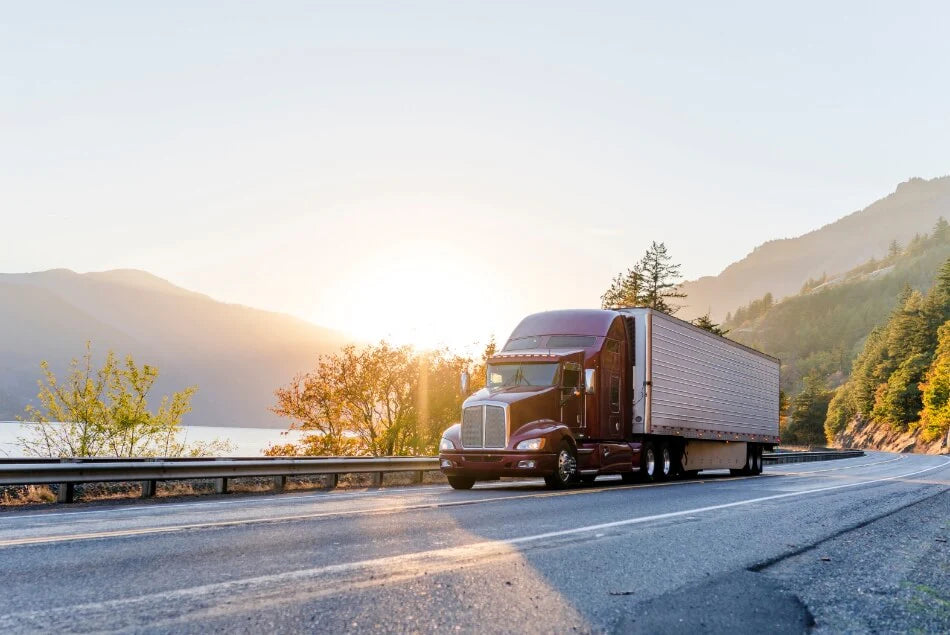Many drivers of large vehicles risk crossing railway bridges that are too low, with disastrous results. Currently, 2,000 incidents involving trucks ramming bridges occur each year, causing millions of dollars in damage and causing significant delays to trains and deliveries, as well as disruption to the public. Network Rail Chairman Peter Hendy explains: "Each incident creates potential delays for tens of thousands of passengers and potential costs for the taxpayer, and this happens multiple times a day."
Snooper supports the 'wise up, size up' initiative launched by Network Rail to raise awareness of the problem and help reduce bridge collapses. In 2017, Network Rail conducted in-depth research with professional drivers and decision makers in the road transport industry to gain a deeper understanding of the issue. Here we look at the results:
Trucks Driving On Bridges Become A National Problem - Snooper News & Views
Bridging risks are not always in the foreground
Bridge strikes are a relevant issue for the majority of drivers and decision makers; However, many other challenges are often more immediate. For example, drivers and decision-makers must consider and meet different customer requirements on a daily basis, comply with health, safety and road traffic regulations, and deal with economic and time pressures. This means that the risk of bridging is not always a priority, and these incidents are often attributed to driver error or external factors beyond their control, such as: B. Signage.
However, if you don't take the time to understand the height of a vehicle, it can lead to many problems for different parties. Crashing a bridge can endanger drivers, pedestrians, railway staff and the traveling public, while costs can impact drivers, railway companies, the community and businesses.
Unplanned trips are one of the main causes
Due to the height, weight and length of the various vehicles, it is important that drivers take the time to plan their delivery routes to avoid low bridges and narrow and easily trafficked roads. However, according to the Rail Safety and Standards Board, 43% of truck drivers admit not to knowing the size of their vehicle, while 52% admit to not having taken into account low bridges when planning their journeys.
Peter Hendy said: “Size matters when you are a professional driver in a heavy vehicle. Not knowing the size of your vehicle or your load can result in a serious accident, a dangerous driving conviction, loss of your driver's license and a hefty fine.”
Incidents could lead to a conviction
Hojol Uddin, Head of Motoring at JMW Solicitors , said: “It is crucial that truck drivers and anyone who drives high-sided vehicles plan their trips before driving to their destination and not be complacent. Failure to plan the trip and carry out the appropriate checks may result in a criminal prosecution in court.
“The charges that the Crown Prosecution Service (CPS) may consider will depend on the circumstances of the collision; However, the majority of these observed cases involve dangerous driving. In some rare cases where the collision results in death or serious injury, the appropriate charge would be death from dangerous driving or dangerous driving with serious injuries. All of these allegations result in a driver's license being revoked with an extended repeat test and a possible prison sentence."
A driver is being driven dangerously if his driving style falls far short of what would be expected of a competent and careful driver and it would be obvious to a competent and careful driver that such driving would be dangerous. In addition, a driver is considered dangerous to drive even if it would be obvious to a knowledgeable and careful driver that driving the vehicle in its current condition would be dangerous. This includes anything attached to, worn on, or within, and the manner in which it is attached or worn.
The word dangerous refers to the possibility of personal injury or property damage. In making the determination, the court would consider what would be expected of, or apparent to, a competent and careful driver in a particular case. In doing so, account must be taken not only of the circumstances that the driver could reasonably have expected to be aware of, but also of all circumstances that the driver was demonstrably aware of.
The consequences for violations related to dangerous driving vary. If the case remains in Magistrates Court, the offense in a community order can result in six months imprisonment and/or an unlimited fine. If the case is before the Crown Court, the maximum penalty is two years imprisonment and/or a fine.
Disqualification is mandatory and starts at a minimum of 12 months and can go up to 10 years or more depending on the circumstances. In addition, there is a mandatory extended re-test and the court could, in certain circumstances, order the vehicle in question to be forfeited.
It is important for truck drivers to be aware of the height and width of their vehicle and plan routes accordingly to avoid bridging. Read this one blog post for more information on how to prevent bridging.


